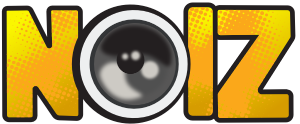I hope this information is taken in the spirit in which it's intended - which is to help everyone understand just how much DSP these new amp models use, and to hopefully help folks optimize their use of the HD500's amps and fx.
I wish L6 either published the actual data and/or allowed a meter on the unit to tell us how much of the DSP we're using, and no, I don't know why that isn't a feature, but it isn't - so I did some testing to get a rough idea of how much DSP various fx and amp models use. The results were pretty interesting.
First, a quick note about nomenclature - L6 uses the concept of "expensive" when they refer to a particular effect or amp's DSP usage, and I'll use that term the same way.
To get a sense of how expensive each effect is, I first loaded each effect into as many slots as possible w/o any amp modeling to see how many slots I could fill up before hitting the DSP limit indicator. If I could get 8 instances of the effect, then I know that the effect takes up no more than 12.5% of the DSP's horsepower (100/8 = 12.5%).
I then found that certain effects (reverbs and pitch shifters, primarily) hit the limit before filling up all 8 slots. So for the reverbs that could be loaded 7 but not 8 times, I concluded that they each used between 12.5% and 14.3% of the DSP (100/7 = 14.3). Similarly, the pitch shifter and pitch glider could be loaded 5 but not 6 times, thus these use between 17% and 20% of the DSP (100/6 = 16.6 and 100/5 = 20). Both Spring Reverbs and the Particle Verb could be loaded 4 but not 5 times, thus these take up between 20% and 25% of the DSP.
Using this information, I then started loading amps and seeing how heavily I could load each one using the information above. What I found is that I could divide the amps up into three different tiers using different fx combinations - that is, less expensive amps could handle more expensive fx chains, while more expensive amps couldn't.
One of the surprising results of this little experiment is that the Pre versions of the amps are not necessarily as relatively expensive as the full versions of each amp. In particular, for example, the Treadplate full version is in the bottom third of relative expense of the full version amps, but the preamp version of the Treadplate is one of the more expensive ones. What that tells me is that the poweramp modeling in the Treadplate must be less expensive than most of the other amps. On the other extreme, the Tweed's Preamp version was in the least expensive group, but the most expensive full version group.
What I take away from these results is that these amp models use an enormous amount of the HD's DSP, so in dual amp mode you're probably using about 80% of the DSP on the amps alone (assuming you're using the full versions). Since the Spring Reverb is between 20% and 25%, you're already out of processing power.
All of this is summarized in the attached chart, which I intend to include in the documents section of the HD500. If I get more motivated, I'll do additional testing to see if I can get more precise information about the amps and even the effects.
A few random tidbits that I figured out during testing:
(1) the octo is the most expensive reverb other than the springs and the particle (big shock, eh?)
(2) the tube comp is at least 2x as expensive as the noise gate (which means the gate must be 6.25% or less)
(3) the two rotary effects are the most expensive of the mod effects.
Ok, hope this is interesting and helpful!
----------snip---------
Since I can't attach the pdf document, I'll just copy the link to it here:
http://line6.com/community/servlet/J...%20(table).pdf
